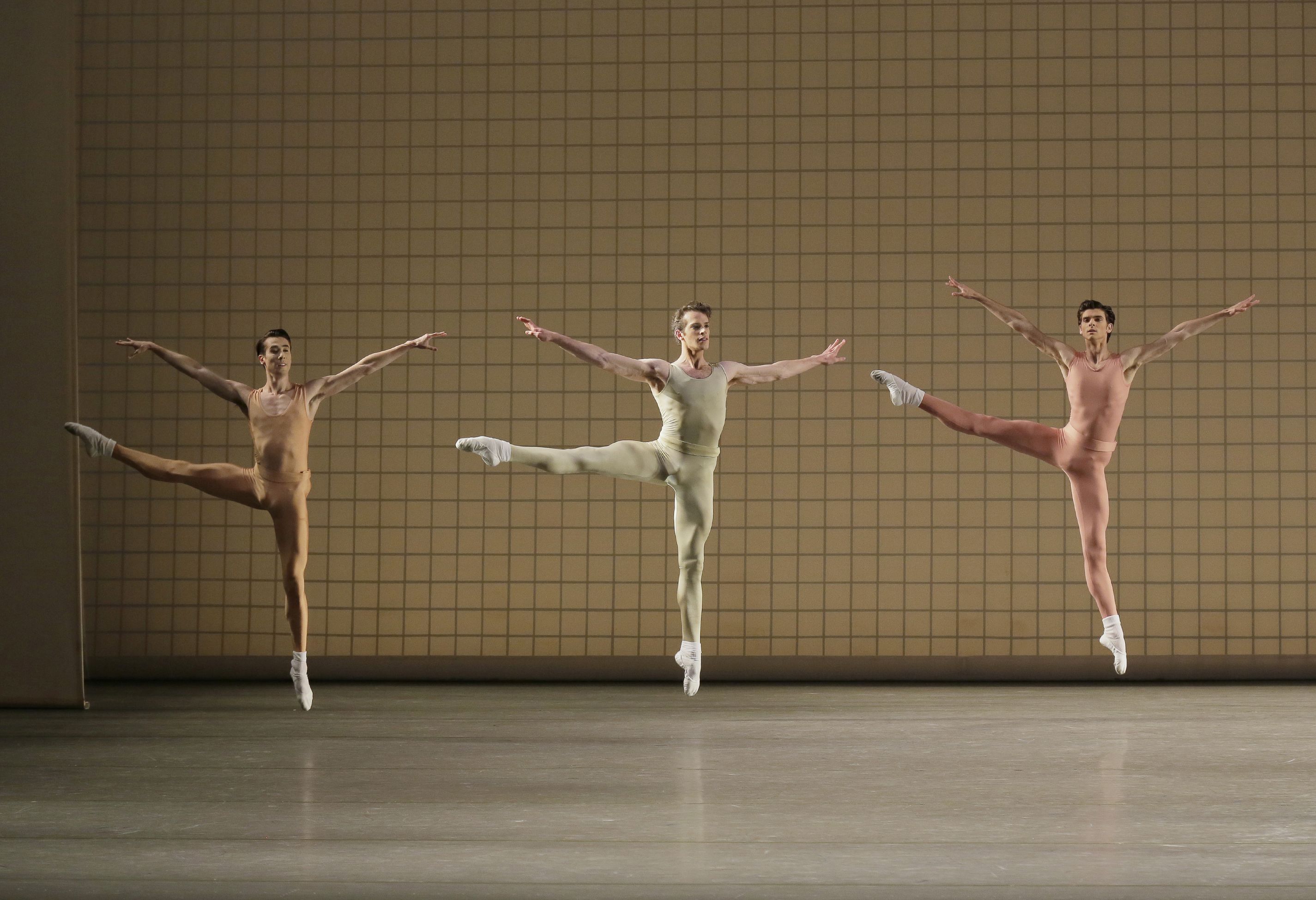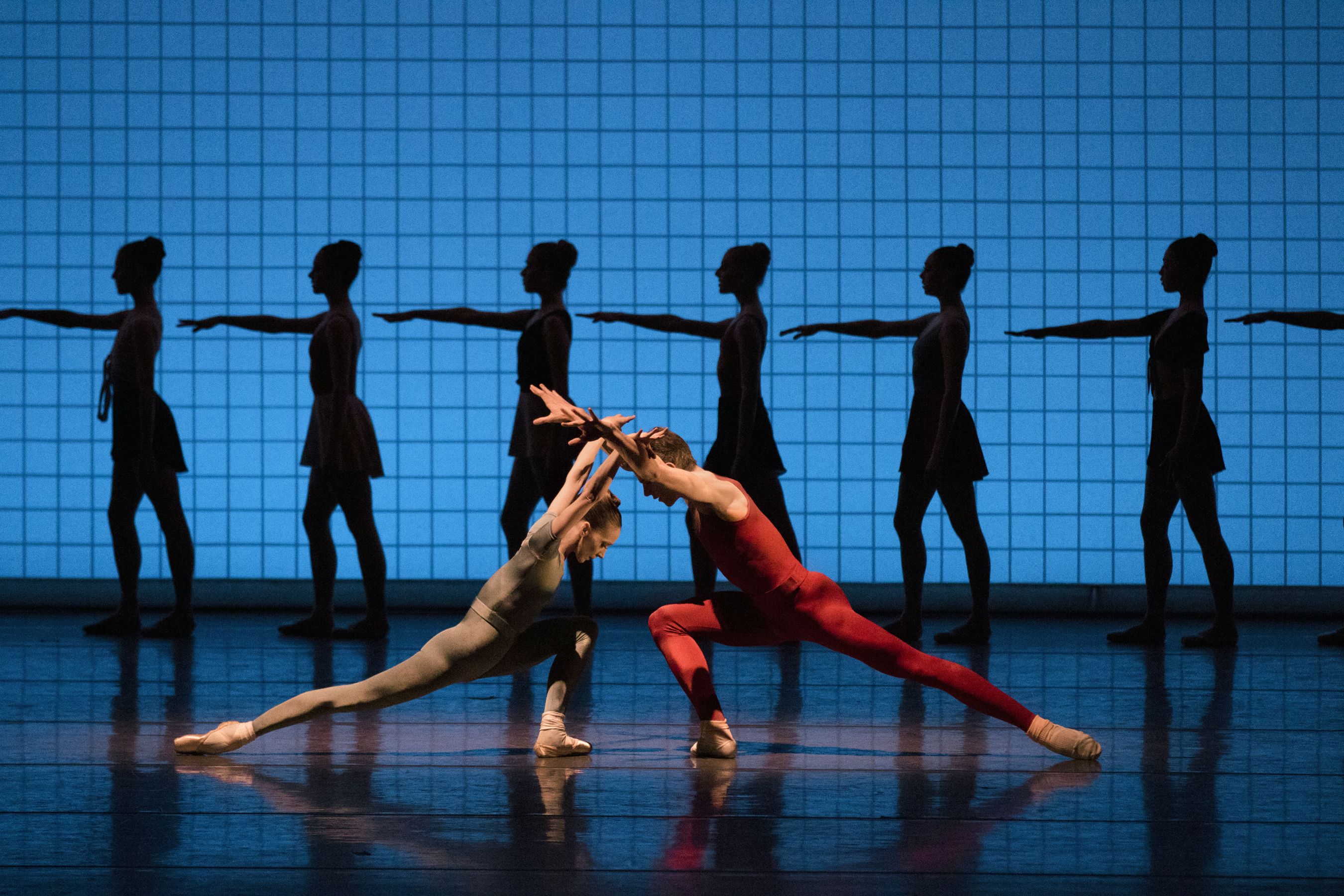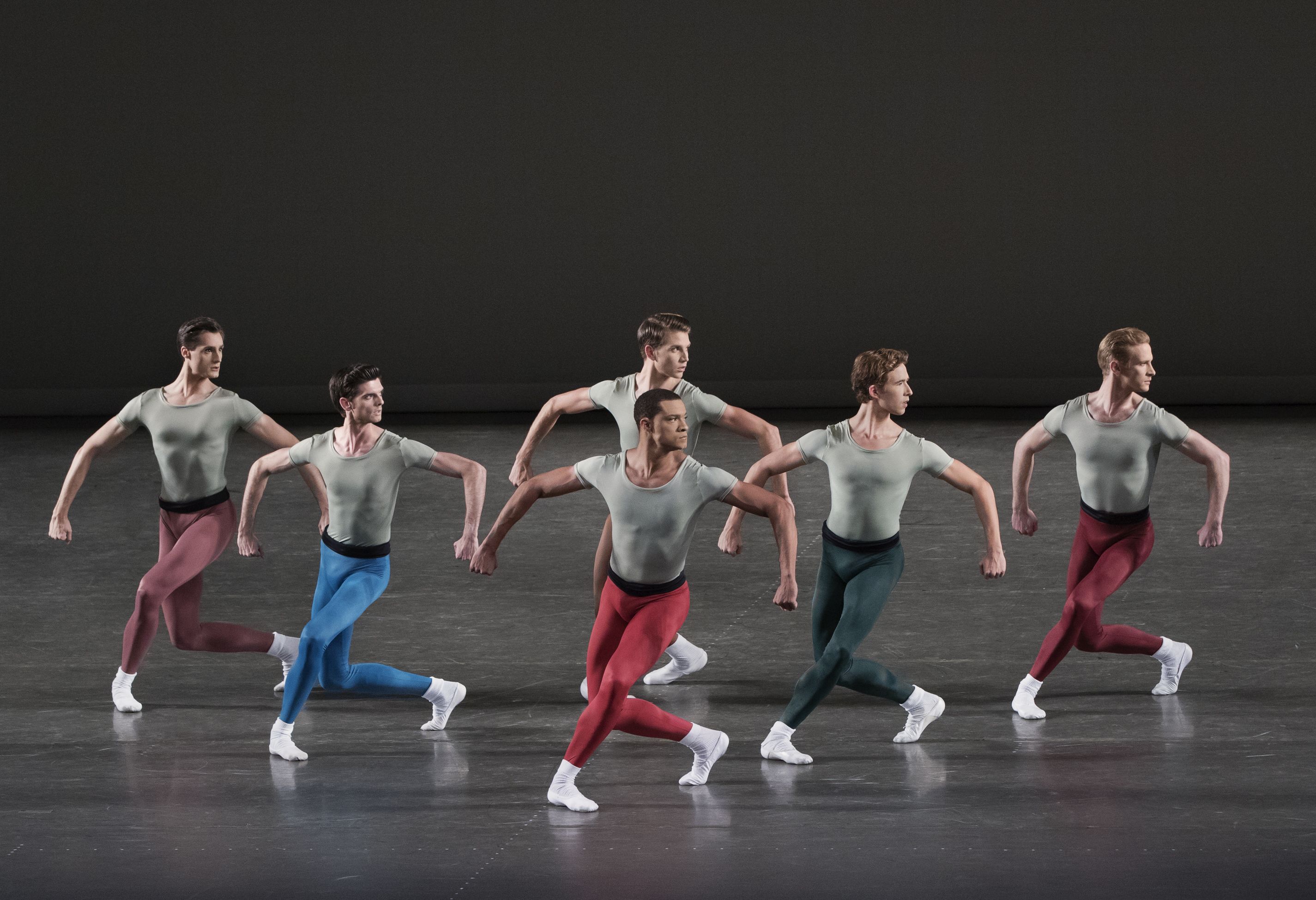
Only Connect
Spotlight on Glass Pieces
, September 15, 2021
Premiering on May 13, 1983, Jerome Robbins’ Glass Pieces was a “first” in many ways. For one, it was the first ballet created on New York City Ballet set to the music of American composer Philip Glass. Fairly well-established at the time as a key figure in the minimalist school (a label he generally does not apply to his work after the early 1970s, preferring “music with repetitive structures”), Glass’s compositions had found some footing in modern, experimental dance, but was still new to the world of classical ballet.
The ballet began as a proposed collaboration between composer and choreographer on a far different work: Robbins had signed on to direct Glass’s opera Akhnaten for its New York staging. The origins of this work correspond with a significant period of change and increasing popularity for the composer; after receiving his training at Juilliard and a Fulbright-funded period studying under Nadia Boulanger, a formative collaboration with Indian musicians Ravi Shankar and Alla Rakha, and an encounter with the 1960s music of Steve Reich, Glass had begun developing his signature style, focused at the time on a process of “paring down” his compositions. By 1971, he’d formed the Philip Glass Ensemble, the amplified instrumentation of which included keyboards, wind instruments, and soprano voices, and begun re-introducing elements of harmony to his work—thus marking the moment of departure from minimalism in his conception of his trajectory.
One of the most significant compositions to come out of this period was Einstein on the Beach, Glass’s first opera, scored for the Philip Glass Ensemble as well as a solo violin and a full chorus. Composed in collaboration with experimental theater director and playwright Robert Wilson, the approximately five hour-long opera (audience members were invited to come and go from the theater as they please) presented a “metaphorical” portrait of Albert Einstein and reflected on his role in the creation of the atomic bomb. Einstein on the Beach premiered in 1975 to mixed reviews, though it has come to be widely celebrated as a groundbreaking and momentous production of the latter half of the 20th Century. Not long after, he received a commission from the Netherlands Opera; the resulting work, Satyagraha, entailed a somewhat similar treatment of the life of Mahatma Gandhi, with the notable distinction that it marked Glass’s return to composing for a full symphony orchestra.

Commissioned by the Stuttgart State Opera, Akhnaten was originally composed for full orchestra and chorus; when Glass learned that the Opera House was being renovated, and the playhouse that would host the premiere instead had a much smaller orchestra pit, he eliminated the violins from the score, resulting in the distinctively darker sound for which the opera is recognized today, and which “suited the subject very well,” according to the composer.
As he told The New York Times in 1983, in an effort to engage more effectively with the opera’s “unusual” score in preparation for handling its stage direction, Robbins decided to begin by creating a ballet. He then charted the music’s structure on graph paper, an approach to the compositions’ repetitive, fairly geometric “shape” that can be felt in the choreography Robbins went on to create (and which would lead to the gridded backdrop for the ballet). Though Robbins eventually had to withdraw from directing the opera, he decided to continue pursuing a piece set to Glass’s music, as yet uninterpreted in the vocabulary of ballet. To the single excerpt from the opera Robbins decided to use, he added two selections from Glassworks; released by CBS in 1981, Glass describes the album as “A six-’movement’ work... intended to introduce my music to a more general audience than had been familiar with it up to then.”
Glass Pieces opens with the vibrant, aggressive rhythms of “Rubric,” in which saxophone, flute, and keyboard repeat several short phrases in wave-like patterns over driving bell tones from the brass. An ensemble of corps dancers, dressed in reflective practice gear reminiscent of the aerobics-wear of the day, enter and quickly cross the stage, seeming to narrowly avoid colliding; three featured couples weave through the crowd, essentially interrupting and temporarily dispersing the carefully orchestrated flow and causing minor adjustments in the corps’ gait. The manner in which the lead dancers come together and pull apart, and the anonymous corps pass like “ships in the night,” apparently unaware of or unresponsive to one another’s presence but for the seemingly unconscious shifts inspired by the couples’ assertions, is likely the source of the “portrait of a city” interpretation applied to the ballet.

Though Robbins claimed, like Balanchine before him, that the work was solely a rendering of the score, telling the Times, ''I didn't set out to do a portrait of the big city,'' it is interesting to note that “Facades” and other Glass pieces included on Glassworks were originally composed for the 1982 Godfrey Reggio-helmed experimental film Koyaanisqatsi. A cinematic “tone poem” that juxtaposes images of natural landscapes with footage of major cities in a statement about the imbalance caused by human intervention in and destruction of nature, the Glass score for the film includes a song called “The Grid”—a reference to the urban planning run amok captured in the smog-covered, crowded city sequences.
Inside the Repertory
Russell Janzen on Glass Pieces
As dancer Russell Janzen notes, Jerome Robbins’ Glass Pieces may be an abstract ballet with an experimental score by Phillip Glass, yet it’s also rooted in the real world, especially the feeling of driving, pulsing undercurrents found just by walking through New York City.
Akhnaten appears in Glass Pieces’ third movement. Set to the music for Act 1, Scene 1 of the opera, titled “Funeral of Amenhotep III,” the explicitly athletic, ritualistically suggestive choreography keeps time with the driving drumbeat and clipped, heavy repetitions of the score. Per the title, the opera opens with the death of Akhnaten’s predecessor; Glass has said of this particular piece that he couldn’t find a description of the funeral music of the time, so he created a “raw, primitive, quasi-military sound” in keeping with his interpretation of the “old Egypt” prior to Akhnaten’s rule. “By vividly portraying that world through the music, I hoped to set off the idealism of Akhnaten even more strongly,” he says. “The blaring brass and pounding drums introduce the world into which Akhnaten was born.” The angular posture and hieroglyph-like poses in the choreography correspond to the spirit of the composition; the cosmopolitanism of the first two movements has transformed into the tribal rat-race.

Per the same Times review: “What is new... is Mr. Robbins' introduction of this kind of work—modular and repetitive in music and dance—to the world of classical ballet, as opposed to modern-dance.” Whether it is indeed a “portrait of the big city,” Glass Pieces is inarguably a reflection of the milieu and moment in which Robbins was working; gone are the flowy silks and so-called “hippies” of Dances at a Gathering, replaced with rigid geometry and humans passing one another rapidly in an ongoing failure to connect. And yet, the ballet is also indisputably a work of connection—between the repertory of the Company and the choreographers that came before, and the always-ongoing commitment to presenting the work of the future.



